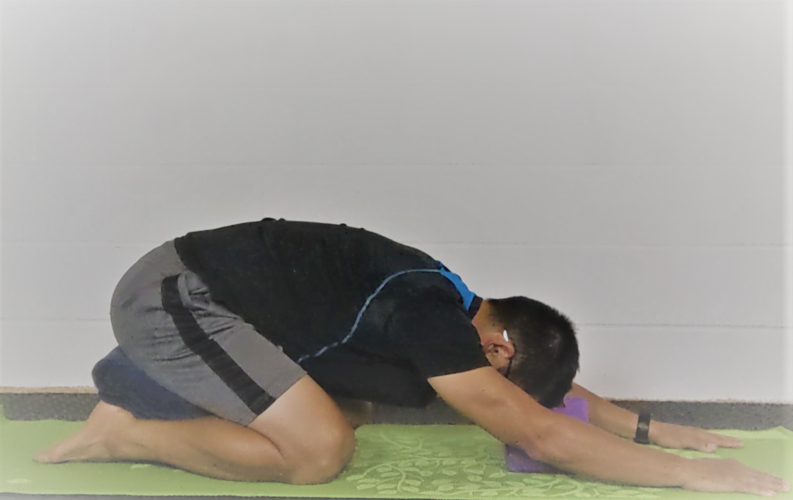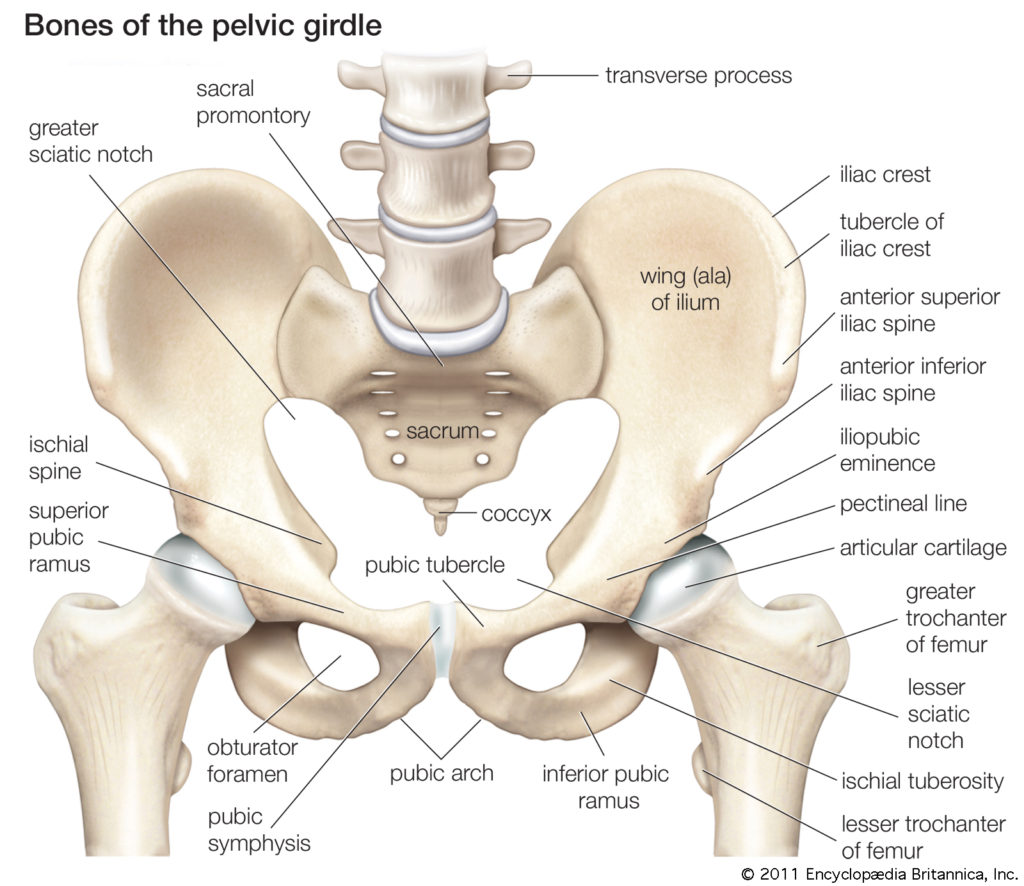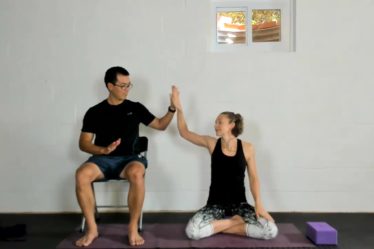
Okay, okay, I don’t think most yoga teachers are INTENTIONALLY being dishonest. However, I think some of us have bad habits when cueing movement related to the pelvis. We’re about to take a deep dive into all things related to your hips, but first we need to take a look at the pelvis, to understand how it all fits together.
PELVIS
In order to better understand where we are headed in our discussion of hips and the different range of motion possible, we must first talk about the pelvis.
The pelvic girdle is made up of 3 main parts: the ischium, the ilium, and the sacrum. Don’t get caught up in the names, but do take a peek at the image so that you have a general idea of where these parts are in your body.

PSA: Yoga Teachers Use the Word Hip for EVERYTHING
Yoga teachers (in my experience) have a bad habit of saying the word “hip” as a general term when referring to different parts of the pelvis. In the same class you might hear all of the following:
“Bring your hands to you hips” (meaning at your waist – the iliac crest)
“Press your hips to the sky” (like in bridge pose – “hip pointers” which we’ll get to later)
“Press your hips to your heels” (as in child’s pose – the ischium)
We are using the word “hip” in each one to mean A DIFFERENT PART OF THE PELVIS! No wonder we’re all confused.
Yoga teachers also make up words! What in the world are “sits bones” and “hip pointers”???
I’m a nurse. I know the names of all the bones and all the muscles in my body (well, I used to at one point). And I’m 100 percent sure you do not have a “sits bone” or “hip pointers”. I’m pretty sure early in my yoga journey I asked a teacher what “sits bones” were. You know, like for real. I wanted to know what she was referring to in my body so I could perform whatever pose she was teaching correctly.
She didn’t have a good answer (at least not a medical answer), and what I’ve learned since then over the years, is that yoga teachers don’t want to say “butt.” When a yoga teacher says, “sits bones” they are referring to the ischial tuberosities of your pelvis.
“Come to rest on your sits bones”
“Remove some flesh from your sits bones”
“Bring your hips to your heels”
“Bring your heel in toward your hip”
You get the point. It’s not your hip so much as it is your BUTT. And now I’ve gone and broken the yoga teacher rule about not using that word.
“Hip pointers” are another misnomer and, I will fully admit to using this one. The actual area of the pelvis that we are referring to has a REALLY long name, and what we mean are the pointy little parts of your pelvis that you might be able to press on most easily if you are lying on your back. They are lower than your navel and higher than your pubic bone – about 4-6 inches away from midline on either side.
The poor, forgotten sacrum
Okay, not really, but yoga teachers are pretty good with this one. Besides tailbone and sacrum, I can’t come up with any other words I’ve heard used to describe this area of the body. You will most often hear people cue you to tilt or tuck your tailbone when they want you to round through the lowest part of your spine all the way down through the sacrum. To direct this motion you may be asked to find a, “posterior tilt of the pelvis.”
This seems a little backwards, but is actually correct, and I want to break this one down.
When directing the motion of the pelvis we must begin in a neutral position. If I am asking for an anterior tilt, it means I want that top front portion (the ilium or waistline)to come forward and drop down – creating a bubble butt (I know, I used the word butt again).
If I ask for a posterior tilt it means I want that same part of your pelvis to move back and down in space, which would cause your low back to curl under and your sacrum / tailbone to become tucked.
Ok, so WHY do teachers use made up terms and say hip for everything?
- They may not know the anatomical terms
- They think their students won’t know the anatomical terms
- Habit, and also they heard it from their teacher before them
- Sometimes, we just don’t want to say the word “butt.”
HIPS: For real, and not just yoga teacher speak.
When I use the word hip, I am generally referring to the actual JOINT where the femur (upper leg bone) connects with the pelvis. This joint is a “ball and socket” joint, giving your leg a wider range of motion than a simple hinge joint (like your knee or elbow). When you hear the phrase “hip opener” in a yoga class we usually think of pigeon pose or maybe lizard, however that is really only focusing on one direction of movement (external rotation of the forward and bent leg). But if you check out the image below you will see that there are at least 3 ways (and countless muscles involved) to “open your hip.”
We’ll delve into the different ranges of motion in part 2 so stay tuned. Until then, pay attention in your next yoga class and see how many times the teacher says “hip” when they really mean different areas of the pelvis….and if they ever use the word butt 😉



[…] you missed out on Part 1 of this series where we tackled the pelvis (and why yoga teachers are lying to you), I highly recommend you go […]
[…] need to finish our discussion about the types of movement available at the hip joint. If you missed Part 1 or Part 2 of this discussion, I highly recommend you read those before forging ahead. They […]
[…] let’s back up to review from the previous posts (Part 1, Part 2, Part 3 of the Hips Don’t Lie, But Yoga Teachers Do series). If you haven’t […]